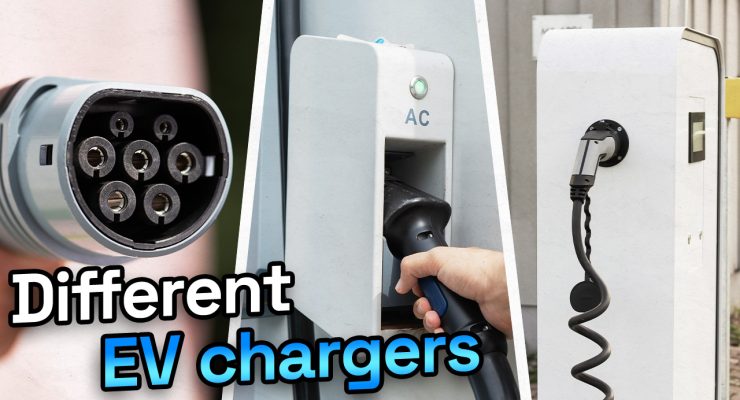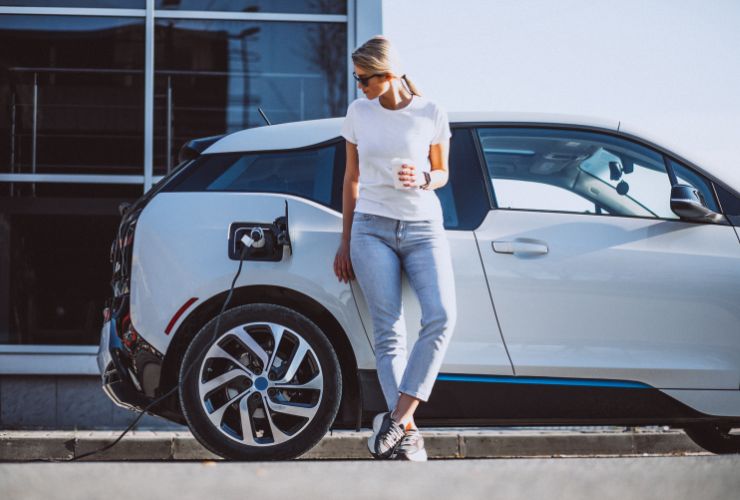
Fast read
The most common EV charging plugs for AC charging in Australia are the Type 2 (Mennekes) and Type 1 (J1772) plugs, while the CHAdeMO and Combined Charging System (CSS) are the most common smart charging solutions put out for DC charging.
Tesla vehicles have their own charging technology and can only be charged on dedicated Tesla rapid chargers. Therefore, it is important to be aware of the various charging speeds, equipment and plugs required for different vehicles to ensure smooth and efficient charging.
Can your electric car use all EV chargers?
In today’s world of electric cars and hybrids, figuring out how to charge them is a significant challenge. Kind of like charging your phone, but there’s a catch – not all EV chargers are the same. So, imagine this: you’re low on battery, find an EV charging station, but, oh no, your car’s plug doesn’t fit.
But hey, here’s the good news: even though not all electric cars have the same plugs, the charging equipment is getting simpler and more similar. That means things are gradually getting easier. Just make sure you know what kind of plug your car needs before you go charging up.
As technology keeps moving forward, the car industry is working to make things even more user-friendly. They’re aiming for a future where charging your car is as easy as can be, making the switch to electric or hybrid cars super convenient for everyone. So, keep an eye out for more cool improvements on the way!
EV Chargers plugging into the PowerPoint
AC charging is the most common method to get electricity to charge EVs and Hybrid Vehicles within Australian homes and private properties.
Usually, a plug-in hybrid or EV comes with external charging cables as a standard inclusion or as a purchasable option, which lets you charge the car from a home wall socket. Therefore this cable that will fit the vehicle will work with compatible Australian PowerPoints, and no compatibility issues should be encountered.
As this home EV charging method is relatively slow, car owners regularly install a dedicated EV charger somewhere in their homes or use EV rapid chargers on the road.
Charging from dedicated EV chargers
The most common type of EV charger in Australia is called Type 2, or the Mennekes plug for AC charging via home EV chargers. This plug type is the local industry standard for brands such as the MG ZS EV, Hyundai Kona, Nissan Leaf, and Audi e-Tron.
The Mennekes/Type 2 plug is also prevalent in the Hybrid Vehicle sector and works for cars such as the Porsche Cayenne E-Hybrid and the BMW X5 xDrive40e.
The Mennekes plug has seven pins for two-phase charging. However, it has two additional pins to support three-phase charging speed and, high-voltage charging.
In Japan and North America, the J1772 plug is the most common, it is also known as a Type 1 plug. However, on some cars in Australia, such as the Mitsubishi Outlander Plug-in Hybrid Electric Vehicle manufactured before 2019, or Japanese imported EVs, you may still see a J1772 AC plug.
The J 1772 plug has five pins, two pins communicate between the EV and the charging device to work out the maximum current available and check how much more charge the battery needs. The other three pins are there to output the AC charge to EV charging cable.

DC charging plug – three options available
Some cars use the CHAdeMO charger for DC charging in Australia, which stands for “CHArge de MOve” (translation: charge for moving).
The term originates from the Japanese expression: “o CHA deMO ikaga desuka,” translating to “How about a cup of tea?” in English. This phrase cleverly alludes to the time it takes for DC charging to replenish a car’s battery, offering a playful analogy.
Becoming the more popular DC charging in Australia is the Combined Charging System (CSS), which originates in Europe and is also the European standard for EV fast charging. It represents the prevailing DC charging standard for plug-in hybrids.
The CSS enables one to charge the EV/Hybrid no matter if one has Type 1 or Type 2 plugs. This is the commonly available EV charger for charging stations in shopping centres or on highways has become the default connection for public charging stations.
Expected future rollouts of EV charging stations will utilize this technology which allows one to use the J1772 and the Mennekes plugs.
Our ‘special car’
Last but not least is our special car, featuring the renowned Tesla range. These cars utilise their EV charging technology only. Although the EV charger resembles a Type 2/Mennekes plug, the communication protocol restricts EV fast charging only solely to Tesla cars on dedicated Tesla rapid EV chargers.
So if you drive a car from another brand, you can not use the Tesla charging network, as your electric vehicle charging itself will not know the Tesla communication protocols.
We still have various plugs because different manufacturers and countries have foreign alliances and interests. Still, we can expect that a cohesive standard solution will be available imminently.
Till then, Australia has used the Type 2/Mennekes for AC charging as the most common standard, CHAdeMO for Japanese-manufactured vehicles, and the combined CCS plus for DC charging.

